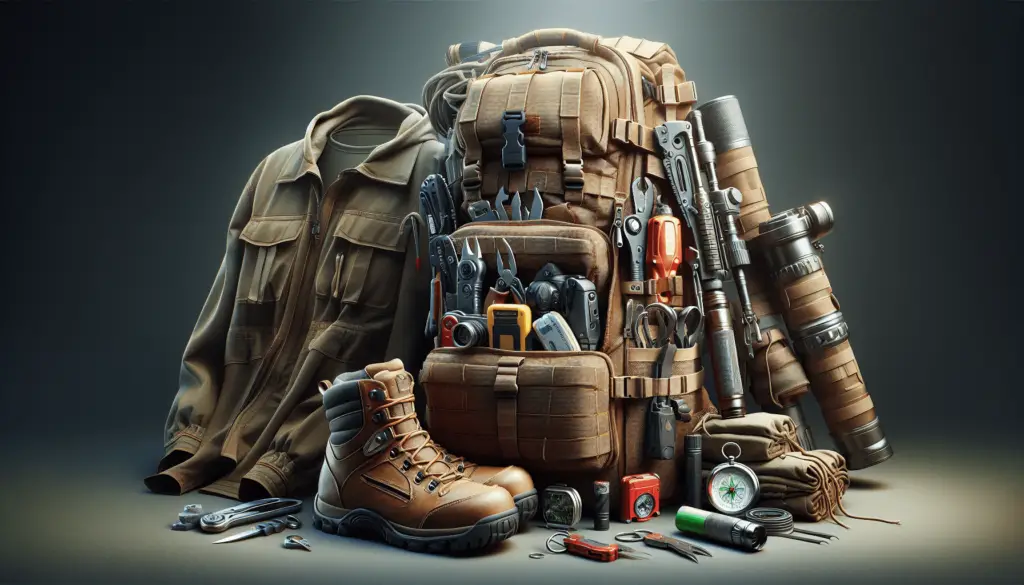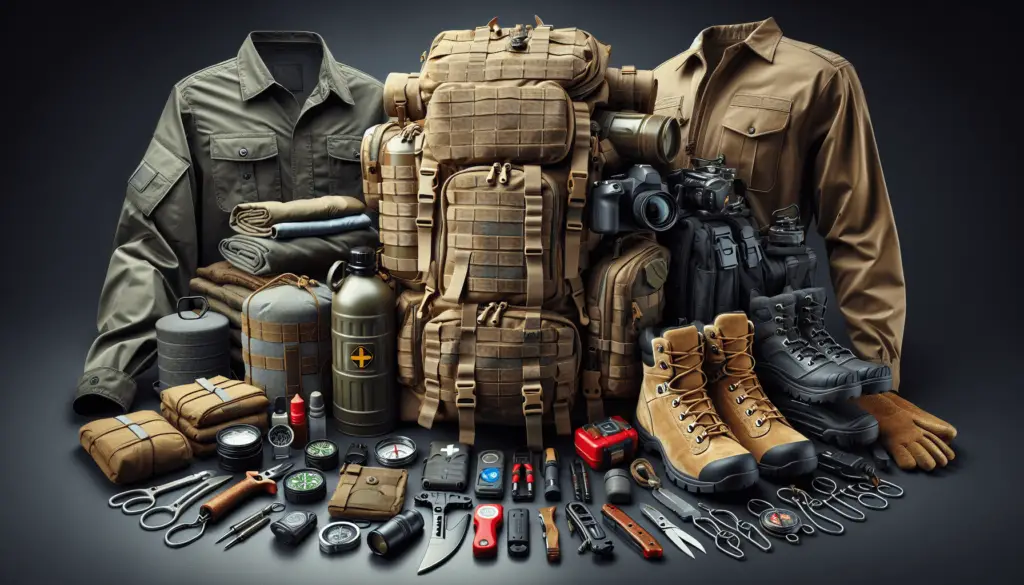Have you ever considered the importance of owning a self-sufficient wardrobe tailored for survival situations? Your ability to dress appropriately and equip yourself with the right gear during emergencies can be crucial. Crafting a wardrobe that can support and protect you during challenging times is a smart and proactive decision.
The Essentials: Clothing
When it comes to survival, having the right clothing can make a significant difference in your ability to endure harsh conditions. Your wardrobe should consist of durable and versatile pieces that can withstand the elements.
Make sure to invest in high-quality fabrics that are breathable, moisture-wicking, and quick-drying. Performance materials such as nylon, polyester, and merino wool are excellent choices for survival clothing. These fabrics offer superior moisture management, insulation, and durability.
Layering System
Layering is a key concept in survival clothing. By wearing multiple layers, you can easily regulate your body temperature and adapt to changing weather conditions. Start with a moisture-wicking base layer to keep sweat away from your skin. Add an insulating layer such as fleece or down to trap heat and provide warmth. Finally, top it off with a waterproof and windproof outer shell to protect you from rain, snow, and wind.
Remember to choose clothing in neutral colors such as black, brown, or olive green to blend in with your surroundings and avoid attracting attention.
Footwear
Your choice of footwear is critical in survival situations. Proper shoes or boots can prevent injuries, provide support, and keep your feet dry and comfortable.
Invest in high-quality hiking boots or trail shoes that offer good traction, ankle support, and durability. Look for waterproof and breathable footwear to keep your feet dry in wet conditions.
Socks and Gaiters
Don’t overlook the importance of socks and gaiters in your survival wardrobe. Socks made of merino wool or synthetic materials can help prevent blisters and keep your feet warm. Gaiters can protect your lower legs from debris, mud, and snow.
Remember to break in your footwear before heading out into the wilderness to prevent discomfort and blisters.

Headwear and Accessories
Protecting your head and extremities is crucial in survival situations. Invest in hats, gloves, and other accessories to shield yourself from the elements and maintain optimal body temperature.
Hats
A wide-brimmed hat can provide shade in hot weather and protect your face and neck from sunburn. In cold conditions, opt for a beanie or a balaclava to retain heat and prevent heat loss through your head.
Gloves
Choose insulated gloves or mittens to keep your hands warm and functional in cold environments. Look for waterproof and windproof options to protect your hands from moisture and wind chill.
Sunglasses and Neck Gaiters
Don’t forget to pack sunglasses to shield your eyes from harmful UV rays and glare. Neck gaiters can provide extra warmth and protection for your neck and face.
Gear for Survival
In addition to clothing, having the right gear can enhance your chances of survival in emergencies. Your gear should be lightweight, compact, and multifunctional to meet various needs in the wilderness.
Backpack
A reliable backpack is essential for carrying your survival gear and supplies. Look for a backpack with adjustable straps, padded back support, and multiple compartments for organized storage. Choose a backpack made of durable, water-resistant materials to protect your belongings in adverse conditions.
Multi-Tool and Knife
A multi-tool and a sturdy knife are versatile tools that can help you perform various tasks in the wilderness. Look for tools with multiple functions such as cutting, slicing, screwdriving, and bottle-opening. Keep these tools within easy reach for quick access in case of emergencies.
Water Filtration System
Access to clean water is critical for survival. Invest in a portable water filtration system or water purification tablets to make water safe for drinking. Look for lightweight and compact options that can filter out bacteria, protozoa, and other contaminants.
Fire Starter
Fire is essential for warmth, cooking, signaling, and morale in survival situations. Pack a reliable fire starter such as waterproof matches, a lighter, or a fire steel in your gear. Practice your fire-building skills before venturing into the wilderness to ensure you can start a fire when needed.
Emergency Shelter
Having a reliable shelter can protect you from extreme weather conditions and provide a safe haven in emergencies. Pack a lightweight and compact shelter such as a tent, tarp, or emergency bivvy in your gear. Practice setting up your shelter before you need it to ensure a quick and efficient setup.
First Aid Kit
A well-stocked first aid kit is a must-have in your survival gear. Include essential supplies such as bandages, antiseptic wipes, pain relievers, and any necessary medications. Familiarize yourself with the contents of your first aid kit and be prepared to administer first aid in case of injuries or emergencies.

Maintenance and Care
Proper maintenance and care of your survival wardrobe and gear are essential to ensure their longevity and effectiveness. Regularly inspect, clean, and repair your clothing and gear to prevent wear and tear and maintain their functionality.
Cleaning
Follow manufacturer’s instructions for washing and caring for your clothing and gear. Use mild detergent, cold water, and gentle cycle settings to clean technical fabrics without compromising their performance. Hang dry or air dry your clothing to prevent damage from heat and tumbling.
Inspection
Regularly inspect your clothing and gear for signs of damage, wear, and tear. Check for loose seams, holes, frayed edges, and broken zippers. Repair any issues promptly to prevent further damage and ensure your gear remains functional.
Storage
Proper storage of your clothing and gear can prolong their lifespan and maintain their quality. Store your items in a cool, dry place away from direct sunlight and moisture. Use breathable storage containers or garment bags to protect your clothing from dust, pests, and odors.
Conclusion
Crafting a self-sufficient wardrobe for survival requires careful planning, investment, and attention to detail. By choosing the right clothing and gear, you can enhance your preparedness and resilience in challenging situations. Remember to prioritize functionality, durability, and versatility when selecting items for your survival wardrobe. Stay informed, stay prepared, and stay safe in all your outdoor adventures.
